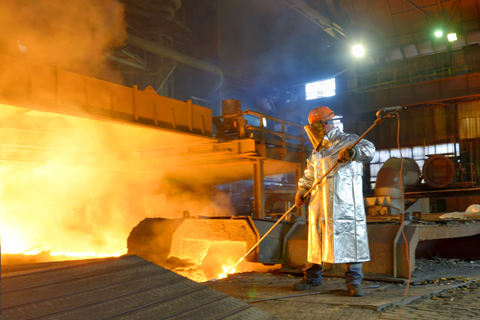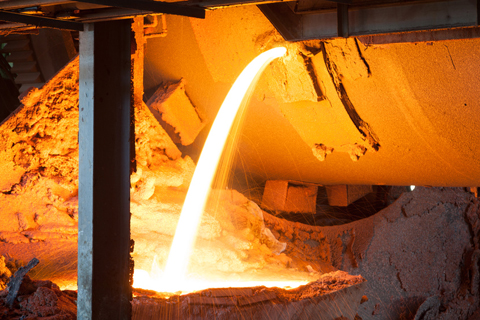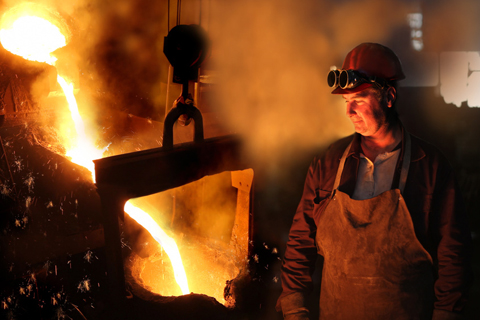Is There a Relevant Willingness to Pay for Green Products?
by Dagmar Dieterle

Interview with Nicole Voigt, Managing Director & Partner, Boston Consulting Group
marketSTEEL: The European steel industry is taking the first steps towards decarbonizing steel production. This comes at a price. Green steel will be significantly more expensive to produce. Who is supposed to pay for this?
 In the end, consumers will have to pay the higher costs. But are they willing? To find out, we asked buyers of cars and washing machines in the run-up to the World Climate Conference whether and how much they would be willing to pay more for a product that was produced in a CO2-neutral manner. Only people who had purchased such a product in the last six months were surveyed. The survey was conducted in Japan, China, Germany, France, Poland, the UK and the US. The product purchased was always the end product, not explicitly steel or other raw materials.
In the end, consumers will have to pay the higher costs. But are they willing? To find out, we asked buyers of cars and washing machines in the run-up to the World Climate Conference whether and how much they would be willing to pay more for a product that was produced in a CO2-neutral manner. Only people who had purchased such a product in the last six months were surveyed. The survey was conducted in Japan, China, Germany, France, Poland, the UK and the US. The product purchased was always the end product, not explicitly steel or other raw materials.
Interestingly, we found significant differences between regions. This surprised me: In China, the willingness to pay for carbon-neutral products is significantly higher than in Europe or the US. In the US, there are big differences. One part of the customer base says that CO2 emissions are not important to them; another part says that CO2 reduction is important to them. Overall, we found that the end customer would be willing to pay a significantly higher price for a CO2-neutral car. At the moment, this is a purely hypothetical consideration, because such a car doesn't exist yet. But another important question is how this willingness to pay will be distributed throughout the value chain. It is clear that the materials industry has made the greatest effort to decarbonize its products.
 marketSTEEL: How can emissions be tracked along the value chain?
marketSTEEL: How can emissions be tracked along the value chain?
I presented the results of our study during a panel discussion at the World Climate Conference. The panel included representatives from the iron and steel industry, suppliers, and automakers. During our discussion, the consensus was that if we want to achieve decarbonization through higher consumer prices, we need CO2 accounting across the entire value chain. This will ensure credibility with the end customer and build trust between the different actors in the value chain. As a first step, ore suppliers can label their products with an embedded carbon footprint (i.e. a calculation of the CO2 emitted for each shipload of iron ore sold). This metric will then be incorporated into the steelmaker's process.
From the steelmaker's perspective, it is then possible to track not only their own emissions and the emissions from purchased energy (Scope 1 and 2), but also the emissions from purchased raw materials (Scope 3). They then pass these values on to Tier 1 and Tier 2 producers, and then on to the manufacturer of the final product, i.e. the car manufacturer. Soon, the carbon footprint of the car will be reported to dealers along with the previous technical data, who can then create CO2 transparency for potential buyers, as Dr. Thomas Becker, Head of Sustainability and Mobility at BMW, explained during the panel discussion on the decarbonization of emission-intensive industries.
 Another example is global steel and metals trader Klöckner & Co, which is using its Nexigen® Data Services solution to securely make CO2 emissions transparent along the value chain via a blockchain solution.
Another example is global steel and metals trader Klöckner & Co, which is using its Nexigen® Data Services solution to securely make CO2 emissions transparent along the value chain via a blockchain solution.
Regardless of the specific technology used to record decarbonization accounting and how the data is shared along the value chain, such as in a blockchain solution, it is important that the data is verified. Who verifies this data? It could be the well-known certifiers, but we still need to work on a solution.
In your own industry (e.g. steel), it might still be noticeable if the numerical values are not consistent. However, it becomes much more complex when trading completely different raw materials on platforms like Catena-X. Will a commodity specific logic (e.g. only for steel) be established there? Will an accepted cross-metal carbon footprint emerge? These are just some of the questions that are currently being asked in the establishment of a transparent decarbonization strategy.
marketSTEEL: Back to the end customer: You have found in the study that there is generally a large target group willing to pay a higher price for decarbonized products. How do I specifically reach this target group?
 Green products need to be clearly identifiable. Strategies need to be developed and agreements made with retailers. There are different ways of attributing emission reductions to end products. Often, emission reductions are recalculated for the entire production. Another option would be to have one set of products that's as green as possible, to which the emission reductions are attributed, while the other set of products initially retain their old carbon footprint. Of course, aligning the supply chain with the end customer in this way is very challenging for an automaker.
Green products need to be clearly identifiable. Strategies need to be developed and agreements made with retailers. There are different ways of attributing emission reductions to end products. Often, emission reductions are recalculated for the entire production. Another option would be to have one set of products that's as green as possible, to which the emission reductions are attributed, while the other set of products initially retain their old carbon footprint. Of course, aligning the supply chain with the end customer in this way is very challenging for an automaker.
But the study shows that in every country there is a smaller or larger segment for "green products". For example, we also looked at the willingness to pay for CO2-neutral washing machines, where the price barriers are naturally much lower. Here, the willingness to pay is already very high at a price increase of, for example, currently around 40 euros.
If a manufacturer does not enter this "green market", it will attract new competitors, as we have seen in other industries - the example of Tesla shows how quickly markets can change. I don't have a specific solution for manufacturers, but you can see how important this is for corporate strategy.
 marketSTEEL: So, in the future, there will be premium products made of strongly CO2-reduced steel for which end customers will voluntarily pay surcharges of about 10 percent?
marketSTEEL: So, in the future, there will be premium products made of strongly CO2-reduced steel for which end customers will voluntarily pay surcharges of about 10 percent?
We have calculated the exact costs of decarbonizing a car's manufacturing chain. We looked at every material, including what is technically possible to reduce CO2 over the next 20 years. For the remaining emissions that cannot be decarbonized, we determined the cost of offsetting them. If you look at the sum of the additional costs, I am firmly convinced that this net-zero car has a very good perspective. Ultimately, it is the overall CO2 footprint of the car that matters to the buyer, not the contribution of each individual component. In order to calculate this value, however, all emissions along the entire value chain must be captured and reported at all stages so that they can be tracked.
Fotos: BCG and marketSTEEL

